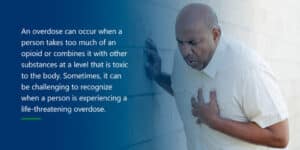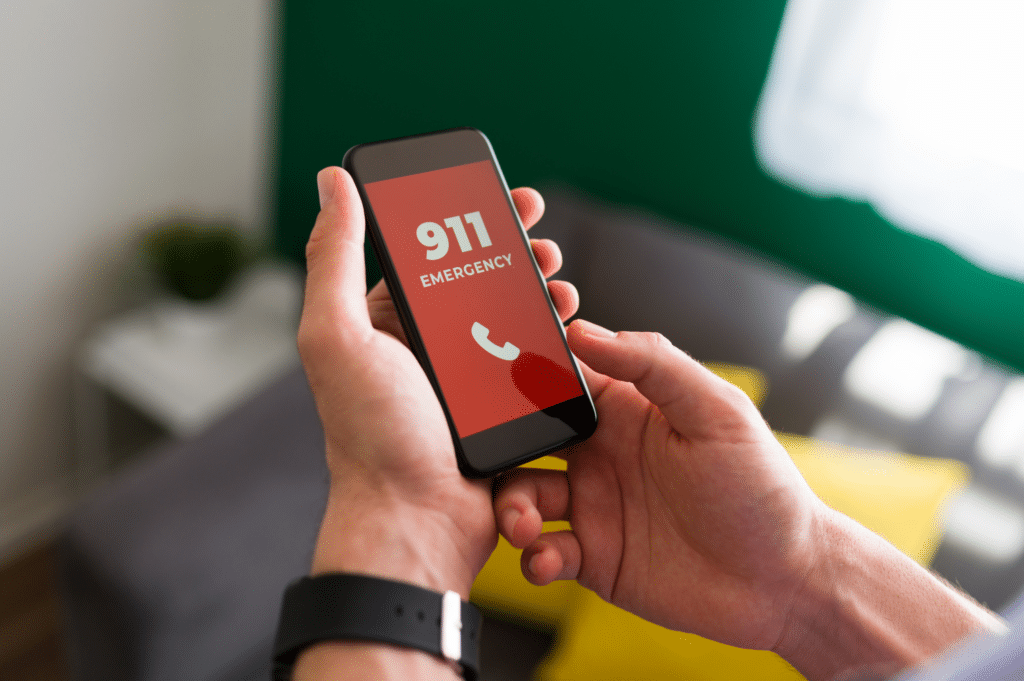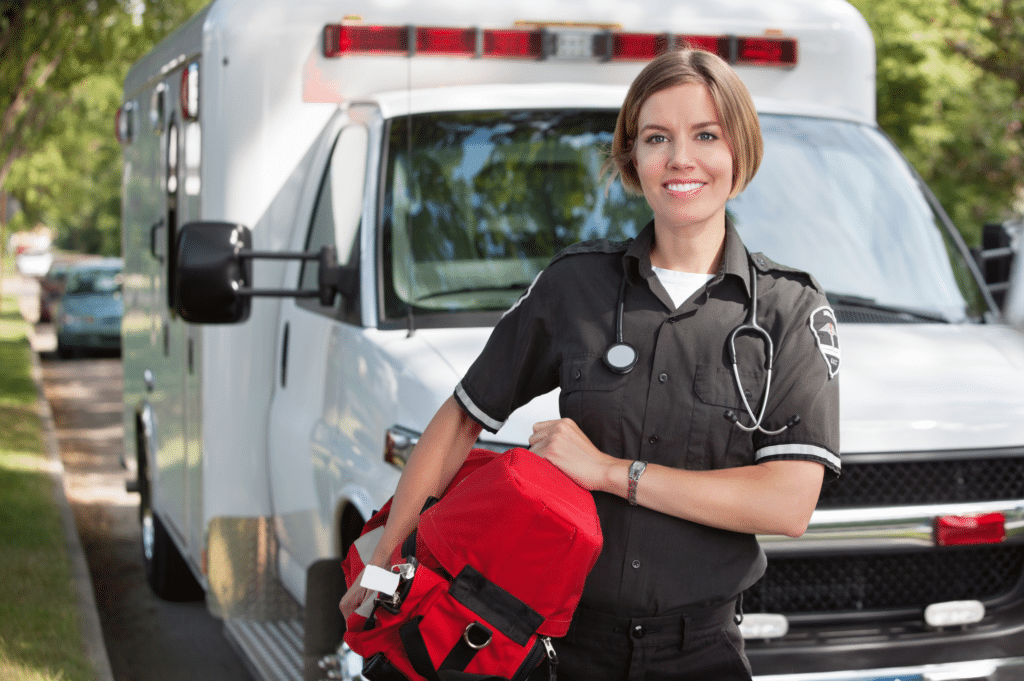Recognizing the signs of opioid overdose can save a life. In this guide, we’ll cover what to watch for, how to respond in a crisis, and when to seek treatment.
In 2021 alone, the United States reported over 71,000 opioid overdose deaths. Opioids—whether prescribed or illicit—affect the brain and body by blocking pain signals, slowing heart rate, and reducing breathing. In high doses or when mixed with other substances, these effects can become life-threatening.
Millions of Americans live with opioid use disorder (OUD). Recognizing the signs of an overdose and knowing how to act quickly is vital. If you or someone you love is at risk, read on to learn the warning signs, how to respond, and what to do next.
Signs of Opioid Overdose

An opioid overdose occurs when someone takes more opioids than their body can safely process—either intentionally or accidentally. It can happen with prescription opioids, illicit substances, or a dangerous mix of both.
Common Signs of an Opioid Overdose:
- Cold or clammy skin
- Bluish lips or fingernails
- Slow or stopped breathing
- Seizures
- Weak or irregular heartbeat
- Gurgling or snoring-like sounds
- Pale or ashen appearance
- Nausea or vomiting
- Chest pain
- Constricted (pinpoint) pupils
- Loss of consciousness or unresponsiveness
If you see any of these symptoms, treat the situation as an emergency and call 911 immediately. Every second counts. Overdoses can be fatal if neglected, killing more than 136 Americans daily.
The risks of an opioid overdose increases when someone combines opioids with other depressants, like benzodiazepines and alcohol. The combination can intensify the effects of the opioid, raising the levels of narcotics in the body. In 2017, synthetic opioids contributed to the country’s highest rate of alcohol-induced overdoses.
Fentanyl is a synthetic opioid that is 100 times stronger than morphine. Many illicit substances are laced with fentanyl, contributing to the high opioid deaths we see today.
What Happens During an Opioid Overdose?
Opioids work by depressing the central nervous system, which controls vital functions like heart rate, breathing, and movement. During an overdose, this system slows dramatically—sometimes to the point where breathing stops entirely. This can cause hypoxia (low oxygen), which may lead to brain damage or death. Physical signs like bluish lips or fingernails, limpness, and unresponsiveness often indicate that oxygen is not reaching critical parts of the body.
Opioids contain chemicals that attach to receptors in the brain, relieving pain and producing a sense of euphoria. While this effect helps patients with pain management when prescribed appropriately, misuse—either by taking too much or using illicit opioids—can overwhelm the brain and body, leading to addiction and overdose.
Mixing opioids with other depressants like alcohol or benzodiazepines (such as Xanax) further raises the danger. These substances intensify sedation and respiratory depression, which can quickly become fatal. In fact, synthetic opioids (like fentanyl) were a major contributor to the nation’s highest rate of alcohol-induced overdoses in 2017.
How to Prevent and Respond to an Overdose

It’s crucial to know how to prevent and respond to an opioid overdose to avoid its adverse effects. If you suspect someone is experiencing signs of an opioid overdose:
- Call 911 immediately – Provide as much information as possible.
- Administer naloxone (Narcan) if available – This opioid reversal medication can restore breathing within minutes.
- Try to keep the person awake and breathing
- Lay them on their side – This helps prevent choking, especially if vomiting occurs.
- Stay with them until emergency responders arrive
Naloxone is safe, easy to use, and available without a prescription in many states. If you or someone you know is at risk of opioid overdose, keeping naloxone on hand can be life-saving.
Preventing Opioid Overdose
Whether opioids are prescribed or obtained illicitly, there are several ways to reduce the risk of overdose:
- Follow prescriptions exactly as directed by your doctor
- Never mix opioids with alcohol or sedating drugs
- Don’t share or sell your medications
- Store opioids securely to keep them out of reach of children or visitors
- Dispose of unused or expired medications at approved drop-off locations
- Know the signs of opioid misuse, such as using more than prescribed or seeking early refills
- Talk openly with your doctor about concerns, side effects, or history of substance use
Taking small, informed steps—like safely using prescriptions, avoiding dangerous combinations, and keeping naloxone nearby—can help prevent an overdose. If you’re concerned about opioid use, talk to a healthcare provider. Early action can make all the difference.
When to Seek Help for Opioid Use Disorder
If opioid use is interfering with your health, relationships, work, or daily routine, it may be time to seek professional treatment. Opioid use disorder is a medical condition—and it is treatable.
You may need help if you:
- Use opioids longer or in larger amounts than prescribed
- Have tried to quit but can’t
- Spend significant time obtaining, using, or recovering from opioids
- Experience strong cravings
- Use opioids despite negative consequences
- Need more of the drug to feel its effects
Reaching out for help can feel difficult, but it’s also one of the most important steps toward reclaiming your life. Supportive, judgment-free care is available, and the earlier you begin treatment, the more effective it can be. You’re not alone—and there are options that can work for you.
Treatment Options: How MAT Helps
Medication-assisted treatment (MAT) is a highly effective, evidence-based approach for treating OUD. MAT combines FDA-approved medications (such as buprenorphine) with counseling and behavioral therapy.
Benefits of MAT include:
- Reduced risk of overdose and death
- Relief from withdrawal symptoms
- Lower relapse rates
- Better long-term recovery outcomes
At Health Care Resource Centers (HCRC), we tailor every treatment plan to meet the unique needs of the individual. Our supportive environment helps patients regain control of their lives with dignity and respect.
Begin Your Recovery with HCRC
Opioid addiction is a chronic condition, but with the right treatment and support, recovery is possible. If you or someone you love is struggling with opioid use, don’t wait to get help.
Contact Health Care Resource Centers today to learn more about our medication-assisted treatment programs and how we can support your journey.
Your recovery is worth it. And you don’t have to do it alone.

